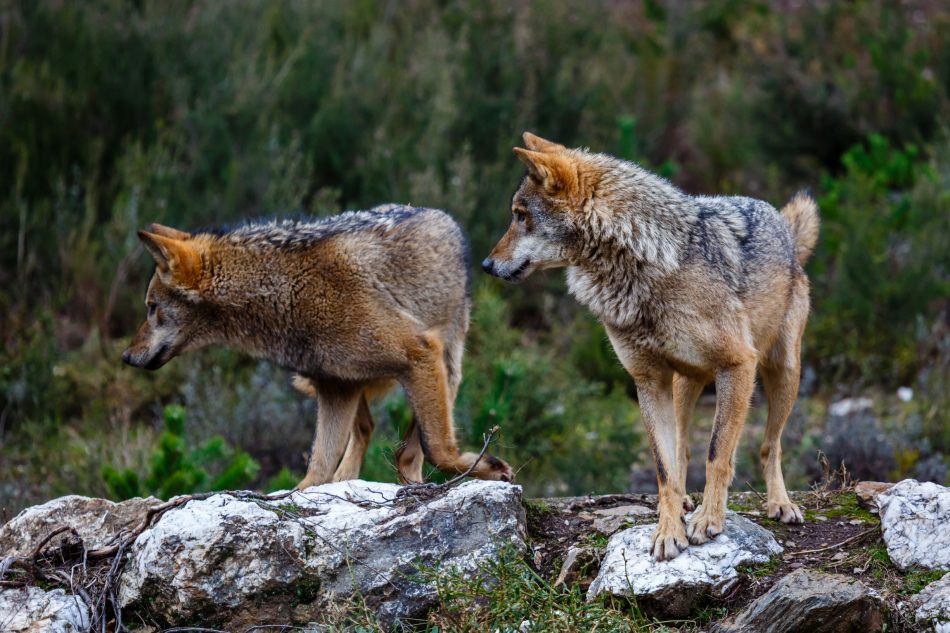The Ministry of Ecological Transition decreed a ban on wolf hunting across Spain from 25th September. The conservation status of the Iberian wolf applies to the whole country, including the autonomous regions north of the Duero river. Currently, wolves can be hunted north of the Duero where they are common.
South of this border, the wolf is a protected species that can only be hunted with special permits. Currently, hunters and farmers kill more than 100 wolves annually in Spain. The wolf population stands at between 2,000 and 2,500 animals. According to the latest estimate from 2012 -2014, they live in about 297 packs. Castilla y León has the highest density, followed by Galicia, Asturias and Cantabria. In total, 95% of the wolf population lives in these communities.
Unacceptable decision
The government’s decision to set a specific date for the end of the hunt has not convinced environmental organisation Ascel, which is committed to the fate of the wolf. President Ignacio Martínez calls the text of the ministerial decree, if approved, “unacceptable”. It includes the wolf in the list of wild species subject to a special protection regime (LESPRE) that increases protection.
However, Martínez says the possibility remains “to continue killing species for the purpose of control, to prevent significant damage to livestock, or for reasons of public interest of the first order including those of a socio-economic nature.” Ascel asked the Minister of Ecological Transition, Teresa Ribera, to halt the management plans of the autonomous communities if the text is published.
Cautious confidence
Environmental action group Ecologistas en Acción expresses its confidence in the ministry and qualifies the step taken as positive. There is a “but”, explains Theo Oberhuber, project coordinator of the organisation. “We are against the system of wolf control, which is carried out without any technical basis or justification. That model has failed completely.” He also states that if the autonomous communities were to take measures to protect the livestock, no form of control would be necessary, and that the measures “should have been suspended long ago”.
Meanwhile, wolf hunting continues, and legally so. Castilla y León, the community with the largest wolf population, announced in April the auction of permits to shoot 12 wolves in the regional hunting reserve of Sierra de la Culebra (Zamora). Interested parties can pay €6,000 to shoot an animal.
Fight continues
While the Ministry continues its roadmap, the autonomous communities with the most wolves and the livestock organisations fight on. Under no circumstances will they accept the ban on hunting to control the number of wolves. Their political leaders claim the species has survived and is thriving in their area thanks to this form of management. They accuse the government of making “contradictory statements”, raising hopes of reopening negotiations in vain.
The ministerial decree amends the annex to the royal decree regulating LESPRE. It now includes all wolf populations, throughout Spanish territory. There is a transitional period during which the Autonomous Communities may implement the measures adopted to control the wolf population. In other words, they can continue to hunt wolves.
Narrow majority in favour
The State Commission for Natural Heritage and Biodiversity approved the proposal to include the wolf in LESPRE with a narrow majority on 4 February. Eight sub-regions and one autonomous city voted in favour (Catalonia, Aragon, La Rioja, Extremadura, Castilla-La Mancha, Canary Islands, Balearic Islands, Melilla and the Ministry), eight voted against (Galicia, Asturias, Cantabria, Castilla y León, Madrid, Basque Country, Andalucia and Murcia). Valencia and Navarre decided not to vote and Ceuta was not present at the meeting.
Protecting and promoting stockbreeding
In addition to a ban on hunting, the decree also includes an agreement to adopt measures to improve co-existence with extensive livestock farming. For example, it should be possible to grant an additional allowance for extensive grazing in areas where large carnivores live together, and there should be support for livestock protection measures.


